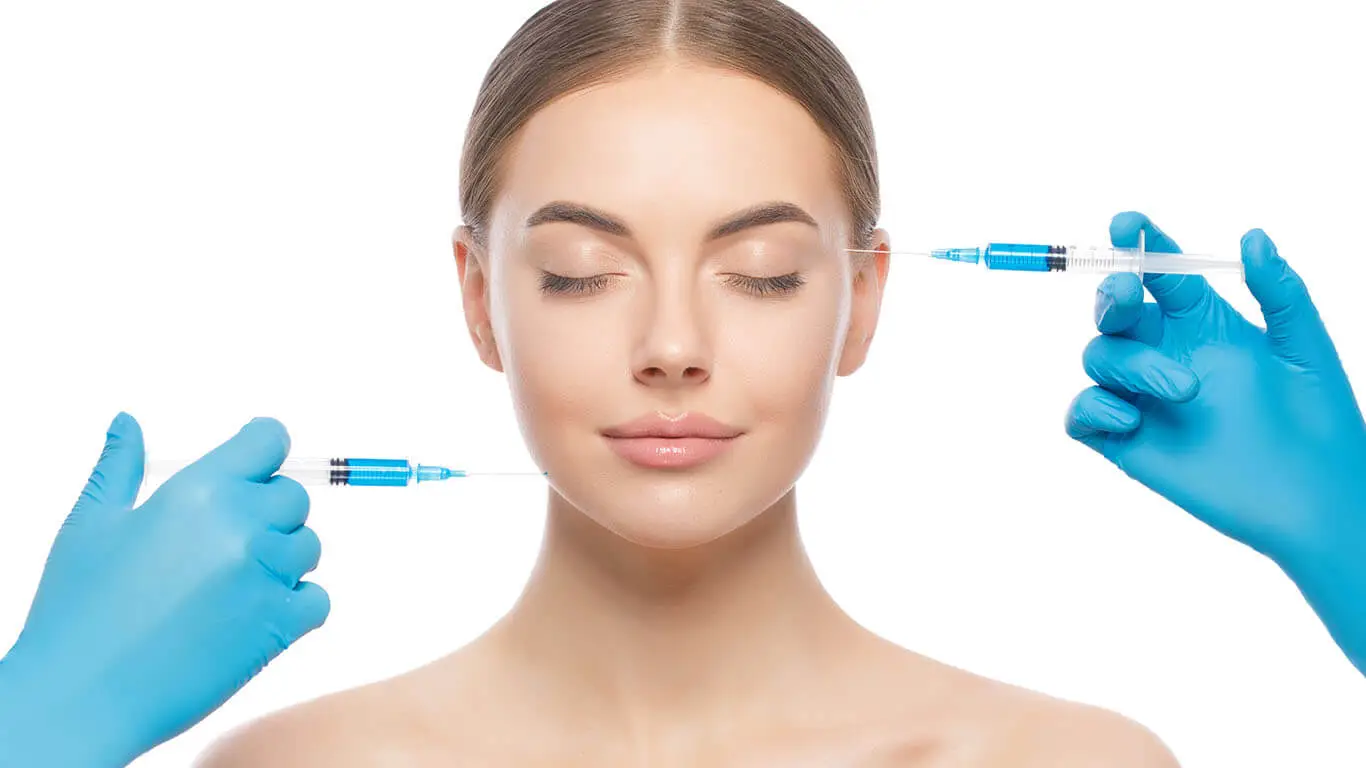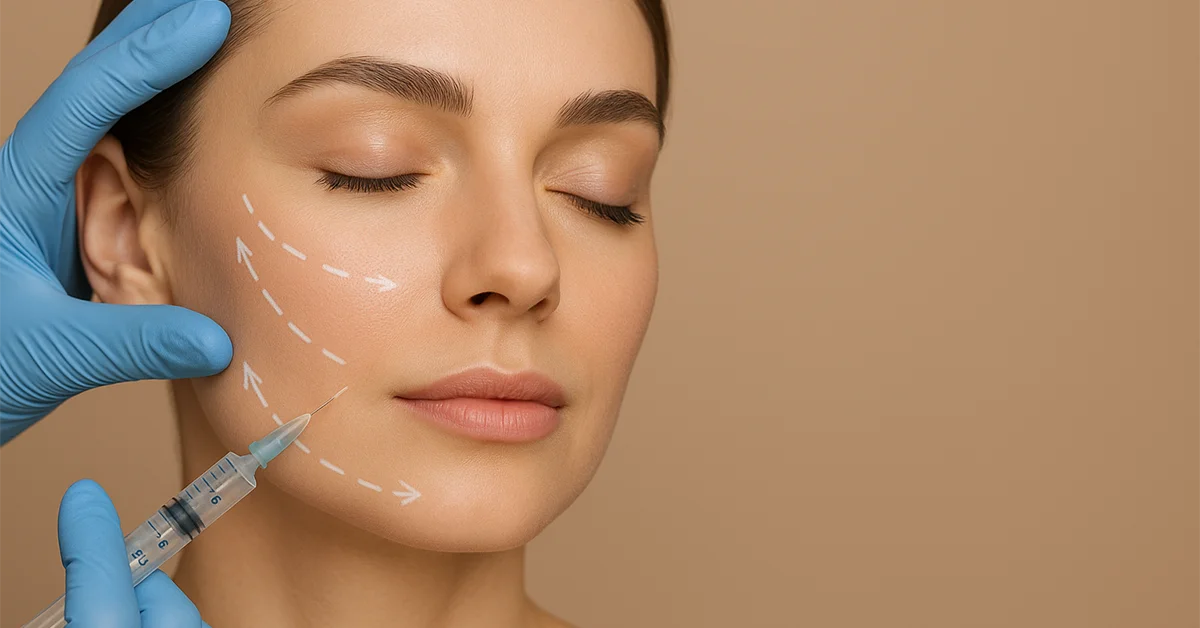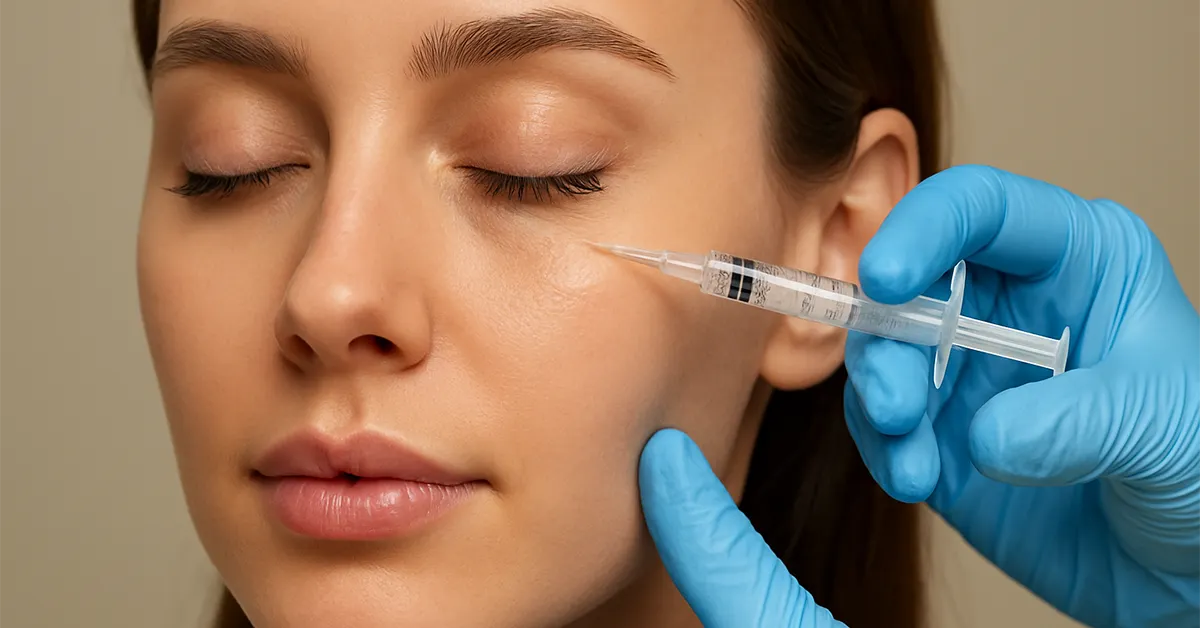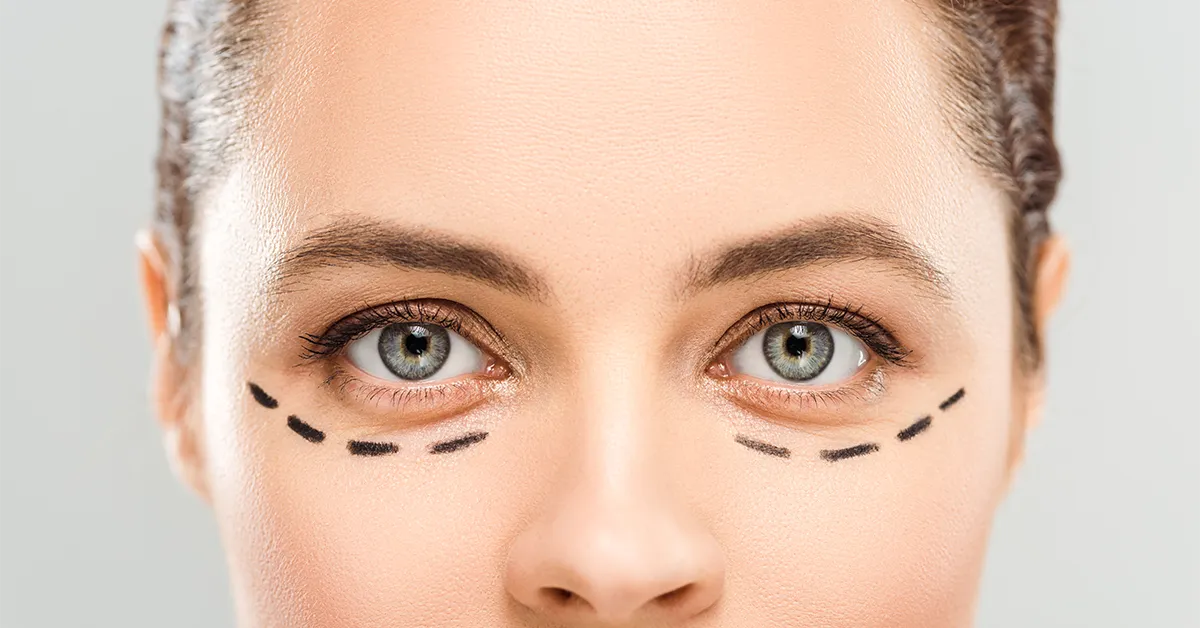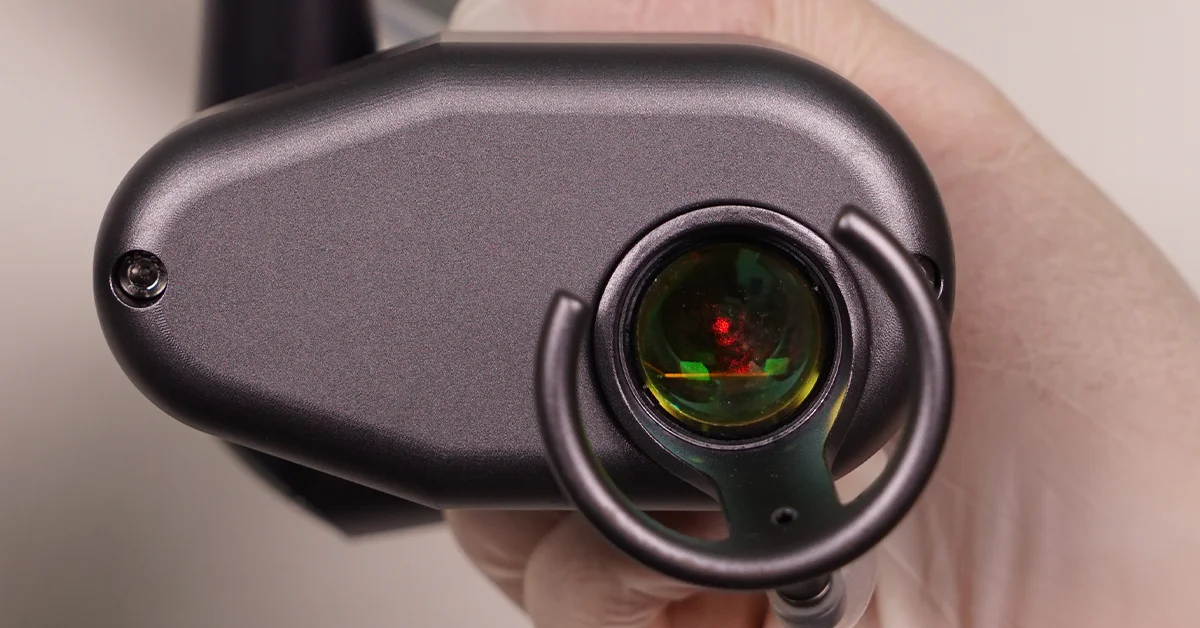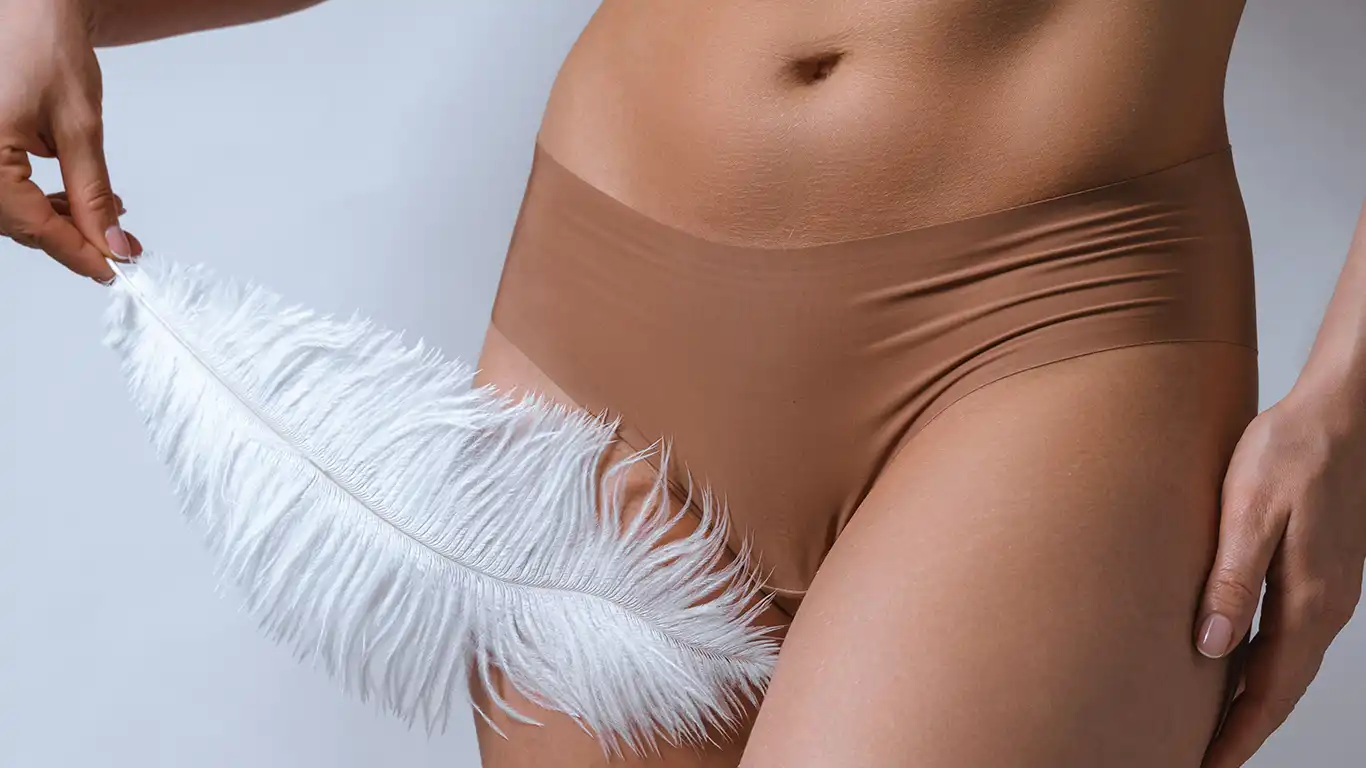Botox and fillers Although both Botox and filler treatments are non-surgical procedures typically performed in a dermatologist’s clinic without the need for anesthesia, and both primarily serve aesthetic purposes, they differ in terms of material used, functionality, and intended outcome.
During Botox and Filler injections, the dermatologist uses a needle with a fine tip similar to the tooth used to inject insulin in diabetics. The injection may be accompanied by applying a local anesthetic cream if the patient requests it.
During both Botox and Filler injections, the dermatologist uses a fine needle similar to those used for insulin injections in diabetic patients. A local anesthetic cream may be applied upon the patient’s request to minimize discomfort.
Botox and fillers are among the most popular cosmetic procedures used in plastic surgery and aesthetic medicine to achieve youthful, natural-looking results. They can be applied to different areas of the body but often produce complementary outcomes when used together.
Botox and filler video in Istanbul, Turkey
In Turkey, Botox and filler treatments are safely performed. When choosing a clinic or hospital, it is essential to select a reputable and experienced facility known for delivering positive results.
Below is a video demonstrating how Botox and filler treatments are performed in Istanbul, Turkey.
Candidates for Botox and Fillers
- Botox and filler treatments can be performed on individuals over the age of 18.
- Botox is typically used for individuals experiencing mild to moderate wrinkles, especially on the forehead and around the eyes.
- Fillers are used to correct mild to moderate facial imperfections such as volume loss or shallow lines.
- If you have any underlying health conditions or skin problems, you must inform your doctor beforehand.
Who Is Not a Candidate for Botox and Fillers
- Individuals under 18 years of age are not eligible.
- Anyone with known allergies to the substances used in Botox or filler injections.
- People with deep wrinkles that may require surgical intervention rather than minimally invasive treatments like Botox and Fillers.
- Pregnant women, to ensure both maternal and fetal safety, should not receive injections.
- Botox lasts around 6 months and can be repeated biannually. Fillers, however, are typically performed as a single session in the same area per year, and should not be repeated twice annually in the same region.
Which Doctors Can Perform Botox and Filler Procedures?
- Only dermatologists or plastic surgeons working in hospitals or medical clinics are authorized to perform Botox and filler treatments.
- Doctors from other specialties are not qualified to perform these procedures.
- Barbers or non-medical personnel are strictly prohibited from performing Botox and fillers.
Difference Between Botox and Fillers Based on Materials Used
Botox is a neurotoxin derived from a specific type of bacteria known as botulinum toxin, which works by temporarily paralyzing muscles through the blockage of nerve signals.
In contrast, dermal fillers are usually composed of natural substances already present in the body. These include hyaluronic acid, which retains moisture, adds volume, and helps restore skin elasticity, and collagen, a protein that provides structure and firmness to the skin. Other commonly used filler materials may include calcium hydroxylapatite and polymethyl methacrylate (PMMA).
Difference Between Botox and Fillers Based on Their Purpose
Purpose of Botox
Botox is primarily used to reduce the appearance of certain types of wrinkles, including forehead lines, frown lines between the eyebrows, and crow’s feet around the eyes. It works by temporarily paralyzing or relaxing specific muscles, preventing them from contracting and, in turn, smoothing out expression-related wrinkles. Beyond its cosmetic applications, Botox is also used for medical purposes, such as treating bruxism (teeth grinding) by relaxing the jaw muscles and reducing excessive sweating (hyperhidrosis) through targeted injections in areas like the underarms.
Purpose of fillers
Fillers are used to add volume to thin lips, improve the appearance of certain scars, enhance and correct the shape of the nose, and reduce the visibility of wrinkles. In some areas of the skin, there can be a loss of collagen and elasticity.
Fillers can also be used to fill and enhance areas of the face that appear hollow or deficient, such as in cheek augmentation. Filler injections are typically used in the lower part of the face, such as for lip contouring.
Difference in Price Between Botox and Fillers in Turkey
The cost of Botox injections differs slightly from that of fillers. While Botox injections range between €200 and €400 per session, the price of fillers depends on the type of material used and the number of areas being treated, so the price of hyaluronic fillers ranges from €250 to €350 and the price of Collagen-based fillers ranges from €400 to €500.
The difference between Botox and Filler steps
The steps involved in Botox and filler injections are essentially the same:
- The doctor applies a local anesthetic cream to the injection area.
- The doctor fills the injection needles with the appropriate amount of either Botox or filler material.
- The needles are injected into the desired areas, and the substance is delivered under the skin.
- After the procedure, the patient can return home the same day.
Post-Procedure Guidelines for Botox and Fillers
- After the procedure, patients should rest completely and avoid excessive facial movements for a short period.
- Do not rub the areas where Botox was injected.
- If you experience any issues, consult your doctor immediately.
Difference in Side Effects Between Botox and Fillers in Turkey
Possible side effects of Botox:
- Skin rash and itching
- Swelling, numbness, redness, and minor bruising at the injection site, often accompanied by some pain (which is normal initially)
- One of the most serious risks comes from inexperienced or unqualified doctors who may miscalculate the dosage and inject too much, potentially leading to systemic poisoning
Possible side effects of fillers:
- Mild bruising: which disappear days after the injection.
- Infections: These are usually mild, but if they persist, they could lead to abscesses and require medical attention
- Allergic reactions to filler substances, which may cause complications such as vision impairment or facial paralysis, especially when injected into the forehead or around the eyes
- Lumps: Caused by uneven distribution of filler under the skin by inexperienced practitioners; these may require surgical removal
Before and After Botox and Filler in Turkey
Below, we show some before-and-after photos of Botox and filler injections performed at Türk Aesthetic in Istanbul, Turkey, one of the leading centers in the field of plastic and aesthetic surgery.
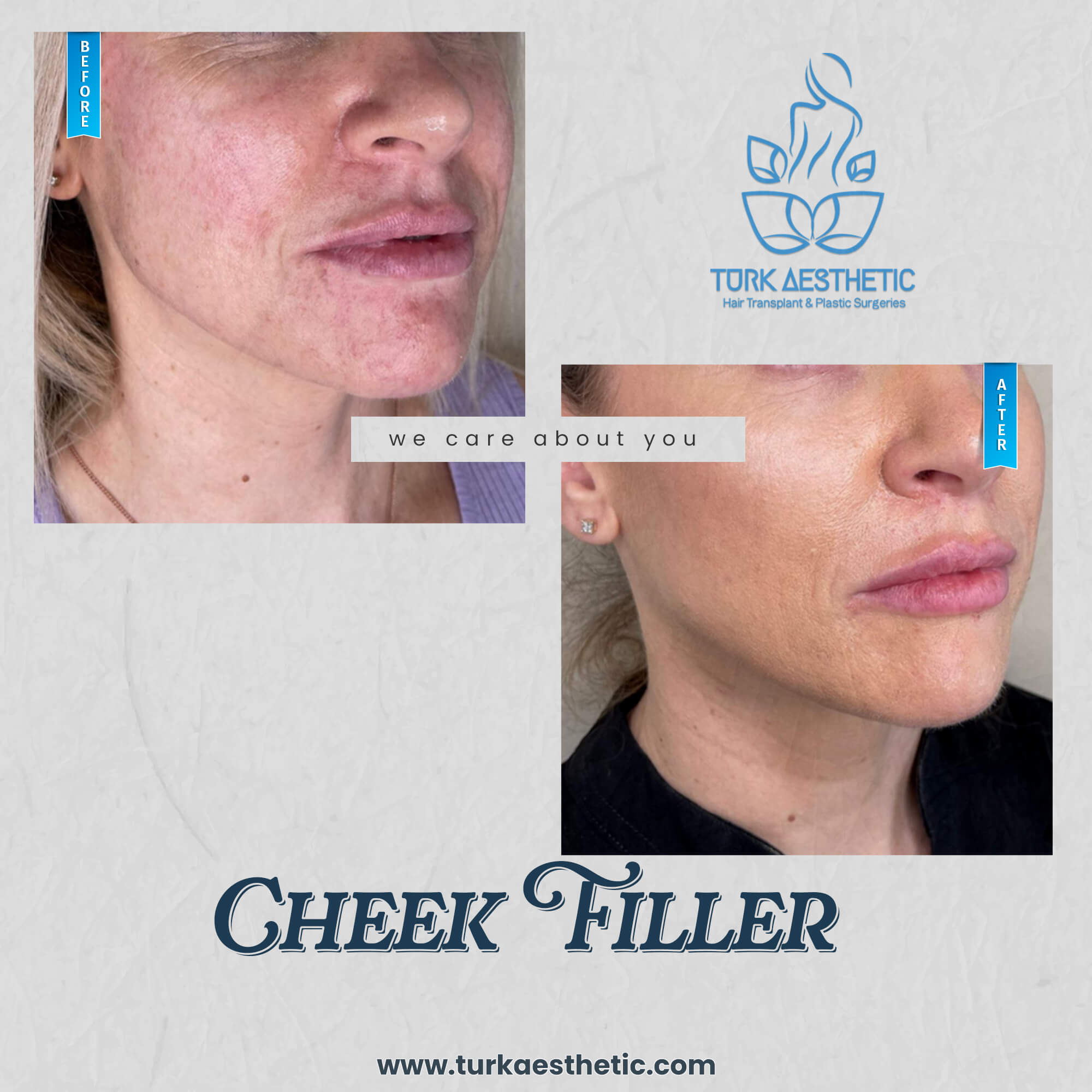
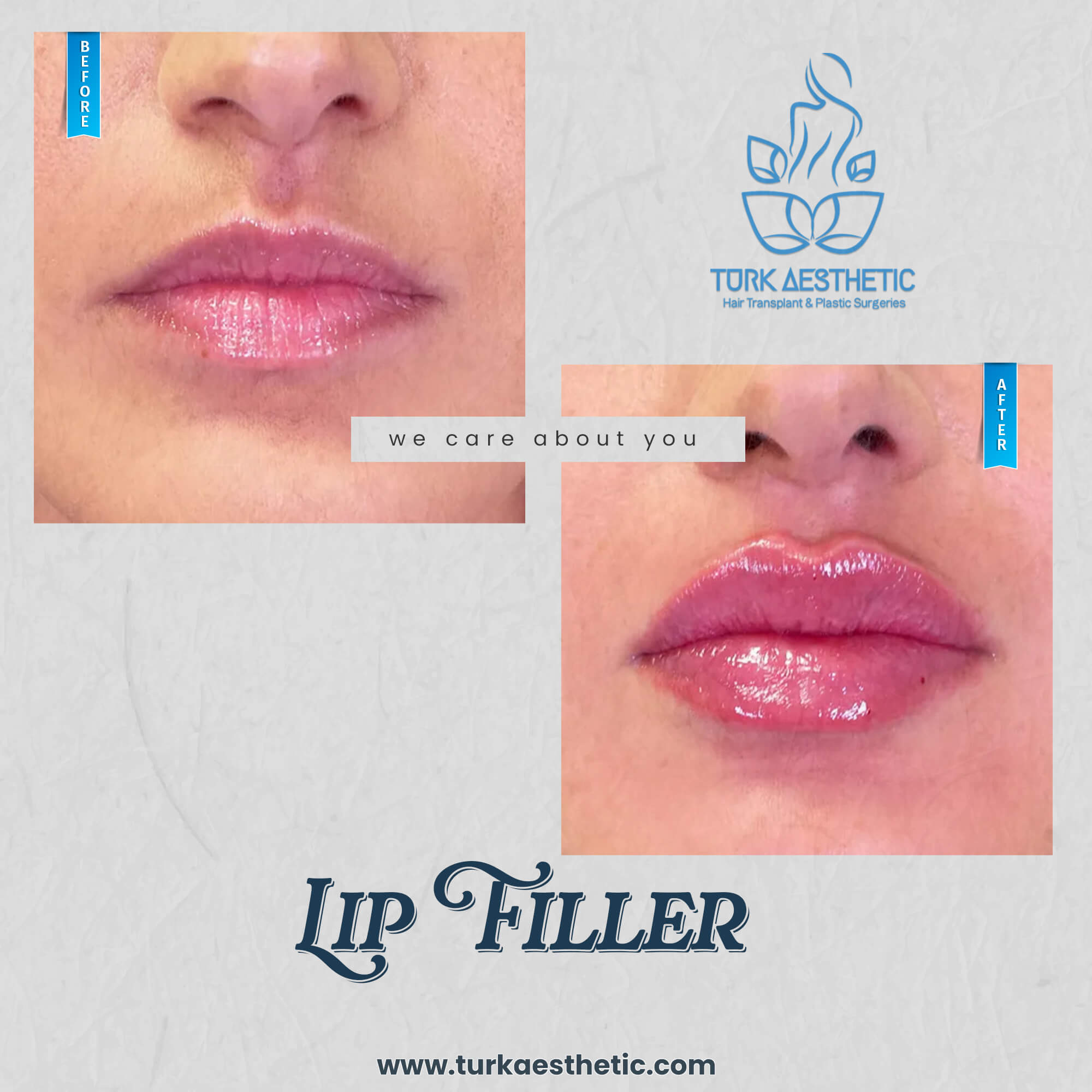
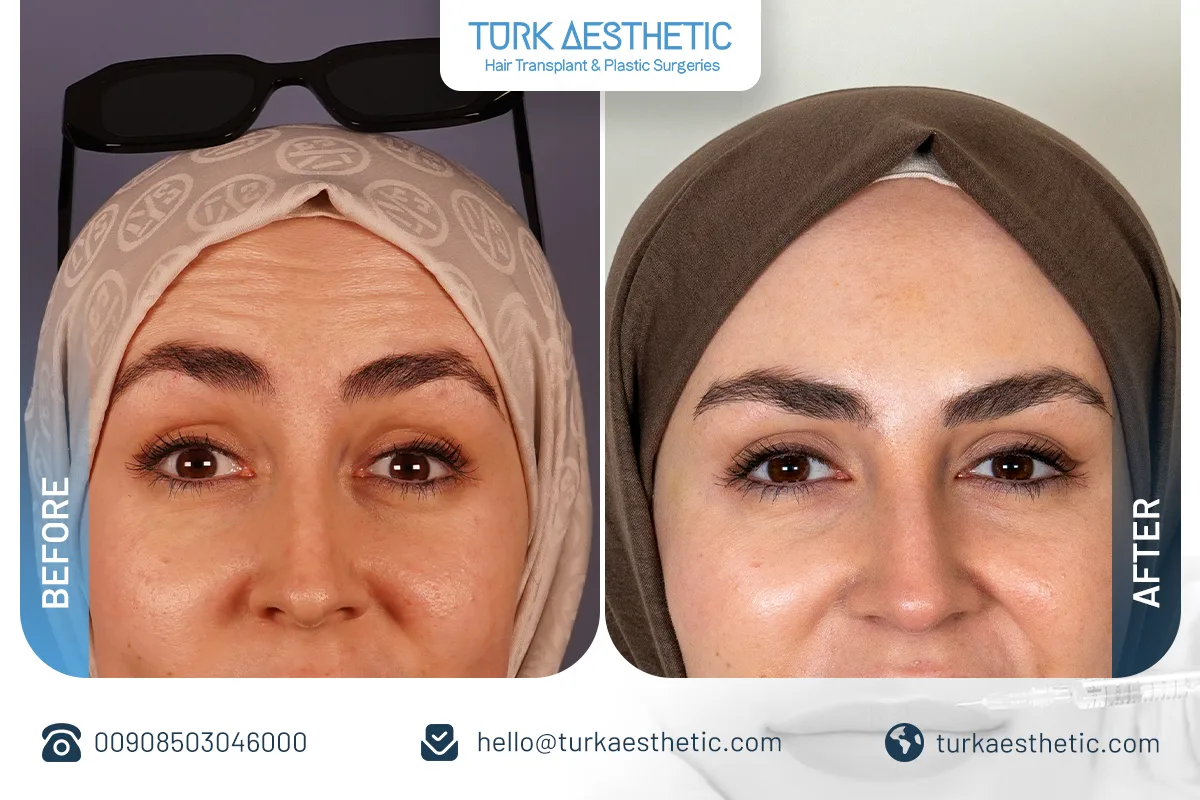
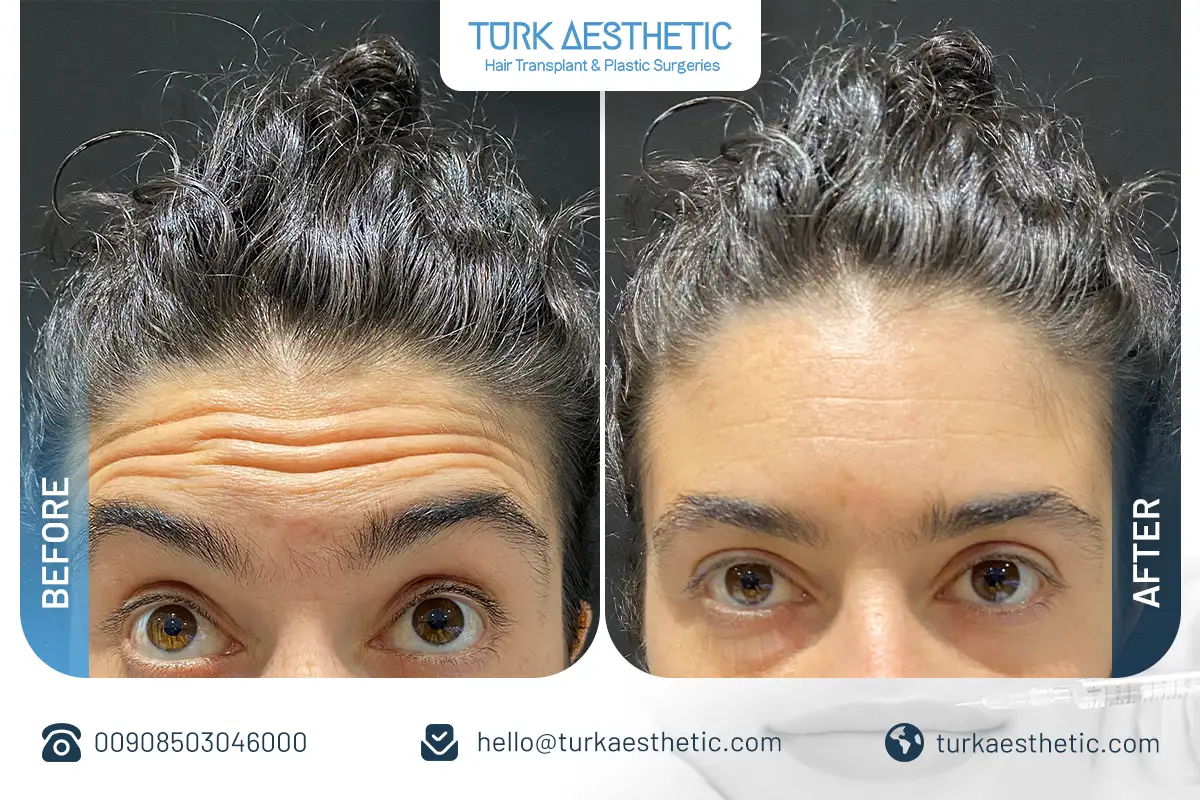
FAQ – The difference between Botox and Fillers
What is the difference between Botox and Fillers?
The main difference between Botox and fillers in Turkey lies in the materials used and their purposes.
– Botox uses botulinum toxin to reduce or eliminate dynamic wrinkles by temporarily paralyzing the muscles.
– Fillers, such as collagen or hyaluronic acid, are used to enhance lip volume, improve the appearance of the nose, and smooth out wrinkles by adding volume under the skin.
What is the cost difference between Botox and Fillers?
– Botox injections cost range between €200 and €400 per session.
– Filler injections vary depending on the material:
Hyaluronic acid fillers cost is €250–€350 while Collagen fillers cost is €400–€500
You can contact our team directly to answer all your inquiries or book an appointment for operations at Turk Aesthetic.

